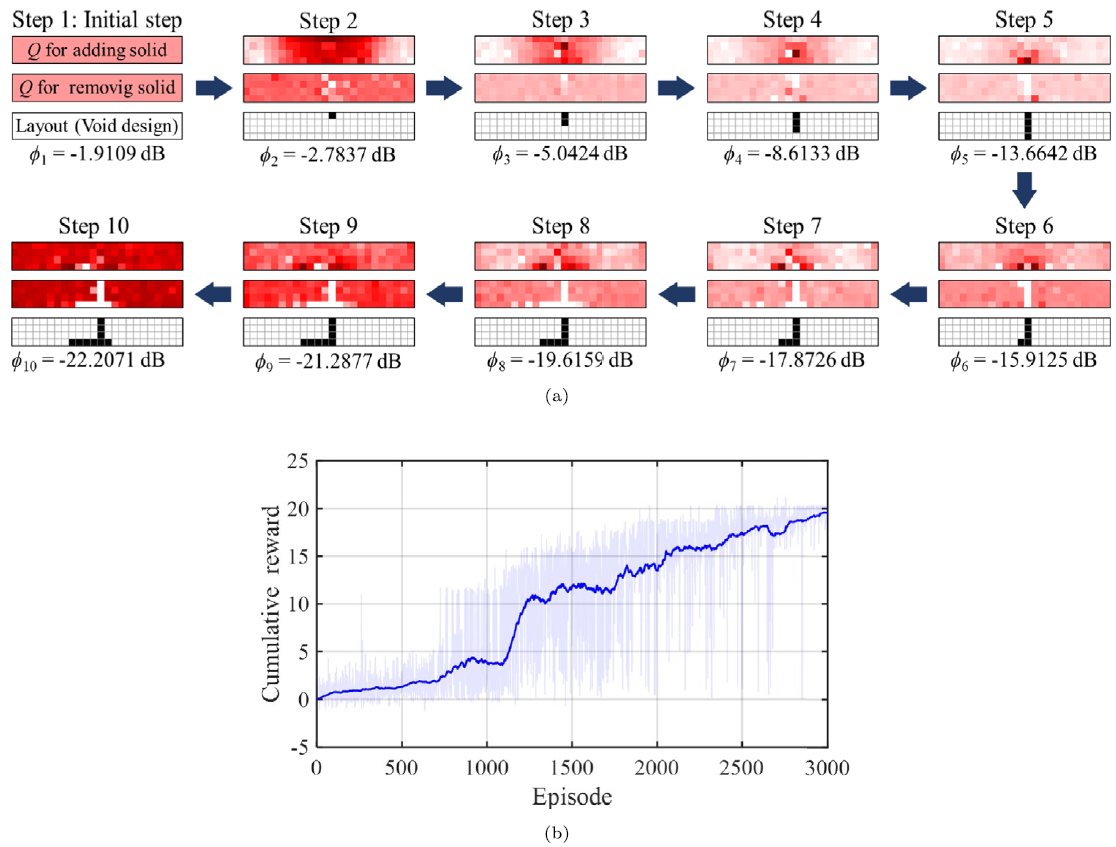[157] A numerical study of reinforcement learning for acoustic topology optimization
M. Shin and G. H. Yoon. Structural and Multidisciplinary Optimization 68:190 (2025)
This research employs a topology optimization based on deep reinforcement learning (DRL) technique to design structures for noise reduction. Reinforcement learning (RL) is a type of machine learning in which an agent gradually learns to find the optimized solution through various experiences in a situation where there is no data. Reinforcement learning can be applied by decomposing the topology optimization process into iteratively adding or removing elements. In this study, we delve into the topology optimization of acoustic systems using Double Deep Q-Network (DDQN), a famous algorithm in deep reinforcement learning. The agent in reinforcement learning observes the acoustic pressure fields, boundary conditions, sound source positions, and the location of the target area. The RL agent takes actions to add or remove solid materials starting from an empty design space. The reward is defined as the difference in the objective function before and after material addition and removal. The goal of the RL agent is to find a solid element addition and removal policy that achieves the maximum cumulative reward, which ultimately finds the topology of the structure that attenuates propagation of sound waves at multiple frequencies. Through numerical examples of acoustic muffler and sound barrier design, this study validates the reliability of the reinforcement learning-based acoustic topology optimization technique. The results demonstrate that the RL agent effectively performs multi-frequencies acoustic topology optimization in various boundary conditions, locations of sound source and objective areas.
